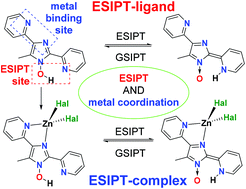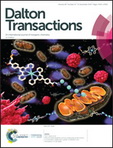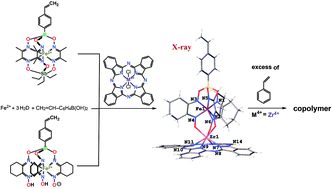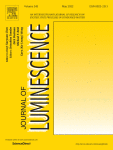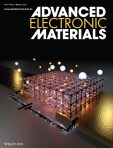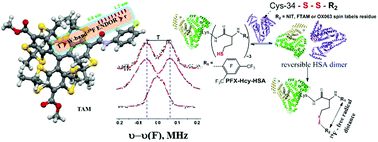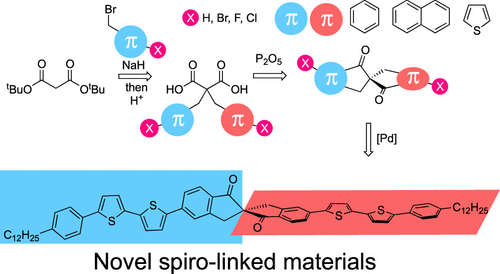|
N п.п
|
Номер проекта
|
Название проекта
|
Руководитель проекта
|
Номер государственной регистрации
в ЕГИСУ НИОКТР
|
|
1
|
22-13-00108
|
Разработка и исследование мемристоров на основе органических полимеров с халькоген-содержащими гетероциклическими цепными блоками и пендантными группами для флэш- памяти нового поколения и применения в нейроморфных системах
|
Д.х.н. Шундрин
Леонид Анатольевич
|
122080400030-4
|
|
2
|
19-13-00040 П
(продление)
|
Новые ингибиторы тирозил-ДНК-фосфодиэстераз, ферментов системы репарации ДНК,
для противоопухолевой терапии
|
Д.х.н., проф. РАН
Волчо
Константин Петрович
|
122080400031-1
|
|
3
|
21-13-00026
|
Дизайн новых агентов для борьбы с респираторно-синцитиальным вирусом у детей на основе трансформаций природных соединений
|
Чл.-к. РАН
д.х.н., проф.
Салахутдинов
Нариман Фаридович
|
121042300054-0
|
|
4
|
21-14-00219
|
Изучение структуры и динамики биологических систем, моделирующих репарацию ДНК методами магнитного резонанса
|
Д.ф.-м.н., проф. Багрянская Елена Григорьевна
|
121042300083-0
|
|
5
|
18-13-00361
(продление)
|
Гибридные молекулы на основе растительных алкалоидов, кумаринов и терпеноидов - привилегированные скаффолды для биологически активных веществ и лекарственных агентов. Способы гибридизации
(срок завершения – 15 декабря 2022 г.)
|
д.х.н., проф. Шульц
Эльвира Эдуардовна
|
121052600191-8
|
|
6
|
20-13-00029
|
Разработка новых мультитаргетных гипогликемических средств путём направленной модификации природных соединений
(срок завершения – 15 декабря 2022 г.)
|
д.х.н. Лузина
Ольга Анатольевна
|
АААА-А20-120102890051-1
|
|
Конкурс 2022 года «Проведение фундаментальных научных исследований и поисковых научных исследований международными научными коллективами» (БРФФИ)
|
|
|
23-43-10019
|
Разработка каталитических систем для селективного синтеза новых хиральных биологически активных гетероциклических соединений на основе монотерпенов
|
Чл.-к. РАН
д.х.н., проф.
Салахутдинов
Нариман Фаридович
|
|
|
Конкурс «Проведение фундаментальных научных исследований и поисковых научных исследований малыми отдельными научными группами»
|
|
|
23-23-00008
|
Разработка методов синтеза и исследование биологической активности фторсодержащих хромонов
|
к.х.н. Политанская
Лариса Владимировна
|
|
|
|
23-23-00546
|
Исследование действия на центральную нервную систему производных имидазолидин-2,4,5-трионов, в том числе модифицированных спиро-сочлененным пиразоловым циклом, сочетающих в своей структуре адамантановый и монотерпеновый фрагменты
|
к.х.н. Суслов
Евгений Владимирович
|
|
|
|
23-23-00547
|
Полифторированные ароматические тетракарбоновые кислоты – перспективные структурные блоки
для современных функциональных материалов.
Синтез и изучение физико-химических свойств
|
к.х.н. Виноградов
Андрей Сергеевич
|
|
|
|
23-23-00617
|
Устойчивые к восстановлению нитроксильные радикалы
с высоким временем спиновой релаксации
|
к.х.н. Морозов
Денис Александрович
|
|
|
|
23-24-00463
|
Исследование структуры гетеродимерного комплекса сериновой протеазы вируса Денге
методами магнитного резонанса
|
к.х.н. Шернюков
Андрей Владимирович
|
|
|
|
23-25-00428
|
Протективные эффекты азотистых аналогов амантадина
как модуляторов нейротрансмиттерных систем в
моделях рассеянного склероза
|
д.б.н. Сорокина
Ирина Васильевна
|
|
|
7
|
22-23-00618
|
Разработка селективных ингибиторов основной протезы SARS-CoV-2 на основе доступных растительных метаболитов
|
Д.х.н. Яровая
Ольга Ивановна
|
121122500038-7
|
|
8
|
22-23-01068
|
Синтез новых органических монолитных сорбентов для таргетированного скрининга метаболитов сыворотки крови методом ВЭЖХ-МС/МС и поиска биомаркеров постоперационного делирия
|
К.х.н. Рогачев
Артем Дмитриевич
|
121122500037-0
|
|
Конкурс «Проведение исследований научными группами под руководством молодых ученых»
Президентской программы исследовательских проектов, реализуемых ведущими учеными, в том числе молодыми учеными
|
|
9
|
21-73-10291
|
Халькоген-азотные гетероциклы – рецепторы заряженных и нейтральных оснований Льюиса: синтез и некоторые аспекты супрамолекулярной химии
|
к.х.н. Семёнов
Николай Андреевич
|
121091400174-2
|
|
10
|
20-73-10090
|
Со-кристаллизация как эффективный инструмент контроля оптоэлектронных свойств органических светоизлучающих полупроводников
|
к.х.н. Казанцев
Максим Сергеевич
|
АААА-А20-120102890054-2
|
|
Конкурс «Проведение инициативных исследований молодыми учеными»
Президентской программы исследовательских проектов, реализуемых ведущими учеными, в том числе молодыми учеными
|
|
11
|
22-73-00046
|
Рациональный дизайн новых азолов, содержащих монотерпеновые фрагменты, в качестве безопасных противогрибковых агентов широкого спектра действия
|
к.х.н. Ли-Жуланов Николай Сергеевич
|
122080400029-8
|
|
12
|
22-73-00098
|
Исследование стереоэлектронных эффектов нитроксильных радикалов пирролидинового ряда. Подходы к созданию функциональных спиновых зондов нового типа
|
к.х.н. Добрынин
Сергей Александрович
|
122080300051-0
|
|
13
|
22-73-00168
|
Разработка противовирусных агентов на основе природных соединений с потенциалом широкого спектра действия нацеленных на этап слияния мембран
|
к.х.н. Соколова
Анастасия Сергеевна
|
122080300050-3
|
|
14
|
22-73-00300
|
Получение и изучение биологической активности 4-[(алкилтио)трифторфенил]-2,6-диметил-3,5-бис(этоксикарбонил)-1,4-дигидропиридинов – перспективных агентов для лечения сердечно-сосудистых заболеваний
|
к.х.н. Кощеев
Борислав Вячеславович
|
122080300047-3
|
|
15
|
22-73-00340
|
Конъюгаты адамантана и монотерпенов как новые эффективные агенты против SARS-CoV-2
|
к.х.н. Пономарев Константин Юрьевич
|
122080300048-0
|
|
16
|
21-73-00246
|
Синтез фенилпропановых кислот, содержащих фрагменты терпеноидов, в качестве потенциальных агонистов FFA1r и изучение их противодиабетической активности
|
к.х.н. Куранов
Сергей Олегович
|
121091400177-3
|
|
17
|
21-73-00281
|
Синтез водорастворимых пространственно затруднённых нитроксильных радикалов ряда пирролидина - перспективных спиновых зондов и контрастных агентов для томографии
|
к.х.н. Таратайко
Андрей Игоревич
|
121091400131-5
|
|
18
|
21-73-00287
|
Управление структурой органических сопряженных молекул методом добавок
|
к.х.н. Сонина
Алина Александровна
|
121091400172-8
|
|
|
20-73-00350
|
Алкоксиамины с изменяемой реакционной способностью: платформа для развития синтеза полимеров методом полимеризации с обратимым ингибированием роста цепи
(срок завершения – 15 мая 2022 г.)
|
к.ф.-м.н. Пархоменко Дмитрий Александрович
|
АААА-А20-120102890053-5
|
